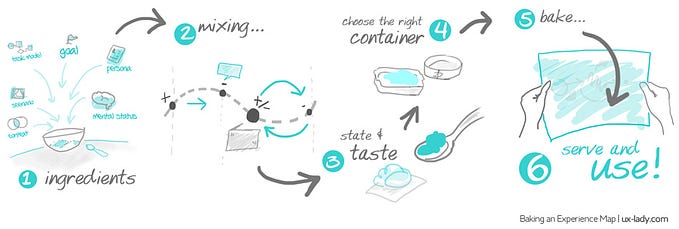Decolonizing Design: what exactly are we talking about when we use the term?
Pedro Oliveira talks about decolonizing design and how we can amplify the debate inside and outside the design community

 There’s a while that decolonizing design is debated among academics and artists, and now, very recently, it started to pop into the design professionals bubbles, such as physical product designers, graphic designers, and slightly more often among digital product designers, UX, and UI designers. Being part of this community, it’s very important we also start to debate the decolonization of design and question not only the organizations we work at but mainly our own behavior as perpetuation agents of the colonizing thinking, going further beyond the small and still superficial practices such, for example, language representation, iconography, and cultural appropriation.
There’s a while that decolonizing design is debated among academics and artists, and now, very recently, it started to pop into the design professionals bubbles, such as physical product designers, graphic designers, and slightly more often among digital product designers, UX, and UI designers. Being part of this community, it’s very important we also start to debate the decolonization of design and question not only the organizations we work at but mainly our own behavior as perpetuation agents of the colonizing thinking, going further beyond the small and still superficial practices such, for example, language representation, iconography, and cultural appropriation.
In this interview, I talk with Pedro Oliveira, that tells more about the subject and gives some suggestions and paths on how we can amplify the debate inside our environment. Holding a Ph.D. from the Universität der Künste Berlin, as well as an MA from the Hochschule für Künste Bremen, Pedro is a researcher, sound artist, and educator, working with the sound and decolonial thinking, and is a found-member of Decolonising Design.
But what's decolonizing design?
Briefly, it is challenging, but mainly the deconstruction of the Anglocentric and Eurocentric thinking when it comes to the practice and the design by itself. Its origins from the Industrial Revolution and its production, having as centers the Europe and the United States, "puts every kind of pre-formal practices as ‘handicrafts’ or ‘vernacular’", as Pedro Oliveira says further in the interview, "ignoring the design principle as a human activity (in other words, any kind of action that modifies the world in order to achieve a functional and aesthetical objective) precedes this spatial and temporal mark. This without even mentioning the idea and practice pre-colonial of the original people from the Americas… what is a much more complex discussion". Decolonizing design happens with the understanding of the thought behind the design establishes and perpetuates by the invasion, destitution, and destruction of the original cultures and territories. Therefore, it up to us designers go deeper and understand that the colonial effects, together with its literal meaning, depart from the colonized territories and extend as thinking.
Interview: Pedro Oliveira

Thank you for participating in this small "interview" if I can call it like this. Before we start, tell a bit about you.
I never seem myself as a "designer" per se, although I have three degrees in the discipline (undergrad, MA, Ph.D.). I always worked with sounds and with the theory/thinking of the design, and it was in these fields I found a way to act and understand what interested me. Today I understand better that my interest in design is, in fact, an interest in how we mold the world and how this molded world molds us. And understanding the design as an intrinsic human activity makes me understand what I study—the sound and the hearing — under this material perspective.
All that to say: I'm a researcher, sound artist, and educator that studied design but no longer work in this field for too long to want (or be able to) call myself a designer. But at the same time, if it was not due to my education in this field, I doubt I'd be here doing what I do today.
At the moment I work as a researcher and an independent artist. In 2021, I will be in a postdoctoral at the Helsinki Collegium for Advanced Studies and, from there, nobody knows.
What did take you to start to question the way we think design?
I believe I question the way we think design since when I understand myself as a designer. I studied design at a University where these questions were always present in every aspect since the classes with some teachers until the corridors small-talks and (mainly) the bar ones. The UNESP-Bauru (São Paulo University of Bauru, Brazil) is a cellar of the critic thinking of design, and have been studied there and had the opportunity to stay for five years immersed in this deconstruction of the discipline sort of influenced my way of “be” a designer; I left the University already interested in research, critical thinking, and the philosophical understanding of the design.
When did you start to study and going deep into the subject?
In a way, since my time at UNESP I had contact with theories outside of the design that helped me to understand the design purposes and the abysm that existed between this and what it really is. However, it was in 2013, when I started my Ph.D. in Design Research at Universität der Künste Berlin, supported by The Brazilian National Council for Scientific and Technological Development scholarship (RIP), inside a European academic environment that I’ve put to test all the thoughts I developed since 2004.
Confronting the eurocentric understanding of the design became very latent and a necessity to me — especially due to living inside all the limits imposed by the University during the process — , and then I’ve just gone deep into theories outside of the design that helped me to comprehend the scenario I was proposing myself to question and analyze. All the baggage post-structuralist, Deleuzian from UNESP ended up giving me support to get in decolonial thinking, cultural studies, etc.
I remember your first studies and academic researches when you moved to Germany, started with the sound design. How have you identified the possibility of deconstruction of the sound production process as an agent of decolonization?
This is a complex question so I’ll try to be short… I have interest in sound since graduation but moving to Germany was, somehow, a step towards a deeper focus on my studies of the sound as such a tool of cultural articulation and cultural construct. The connection with the decolonial thinking came by understanding that the modernity principles (that drive the colonial thinking) privilege the sight as the most rational of our senses. However, the hearing is as fundamental as the sight for the construction of the modernity, mainly through technological measurement and mediation gadgets (i.e. stethoscope, telephony, phonograms, etc)—in other words, puts the hearing as the sight’s “other” and, therefore, more “subjective” when it is as implicated human faculty to the construction of the reality as the sight. Due to this, the hearing sort of "escapes" from its role in the modernity and offers an entry point to understand how we also build a world throughout what we hear. Hence the connection to the design is made—that also privileges the sight — and a bigger focus in the relation hearing-world through the materiality (in a very aligned perspective to the Marxism, although I consider myself more familiar with the post-structuralism) helps us to understand how it's possible to confront the coloniality idea also throughout the sounds and hearing.
How was the creation of Decolonizing Design?
It was a confluence of factors but much of it came from two channels: one was the 2014 MoMA online exhibition “Design and Violence”, where a post from John Thackara about a project regarding “famine” has begotten a huge polemic around privilege, whiteness, and eurocentrism in the design — at this moment Ahmed Ansari, Mathew Kiem, Luiza Prado and I started a conversation. The other channel was the Design Research Society conference in two moments, first in 2014, where I’ve met Mahmoud Keshavarz and there we became friends, and the second in 2016 when we tried to write a paper (together with Danah Abdulla e Ece Canlı) and it was rejected with some very doubtful commentaries. From this came the impetus of gathering our conversations about eurocentrism in one single channel and offer it as a platform. The Decolonizing Design website went live on the same day as the Design Research Society 2016 what automatically put us the label of “troublemakers”(which we embrace with love).
Where and how Decolonizing Design acts?
At the moment we are not much active — due to individual commitments — but we showed up as a group a few times here and there. Basically, each of us has different interests and acts in specific regions, so we are more like "representants" of the whole group instead of as a group by itself. The majority of us are based in Europe but we are always in contact with our home countries trying to establish this bridge.
Our production as a group is majority written (for example, we edit an especial edition of the periodic "Design and Culture" and we have some chapters in published books) but in 2016 we organized the symposium “Intersectional Perspectives on Design, Politics, and Power” in the Malmö University.
How do you organize the content, articles, events?
Our group’s biggest communication channel is Slack. But it’s more organically, respecting our individual time and commitments. It’s not easy to coordinate people spread over the world, with jobs, partners, kids, but among ups and downs, it works.
How can we designers follow more what you do?
On Twitter @DecolDesign and our website www.decolonisingdesign.com — although they are a bit quiet now. Or you can follow our private social media.
You can follow Pedro on Twitter and Instagram
I know there’s a long time since you don’t work in the market as a designer and now is fully focused on academia as an educator and sound artist. But can you point or remember the main signs of the colonization of the design nowadays?
Well, we just need to remember how we have learned design in Brazil, for example, where the discipline origin comes from Bauhaus and puts every kind of pre-formal practices as 'handicrafts' or 'vernacular'. This is an interesting sign because connects the idea of "design" with the Industrial Revolution, ignoring the design principle as a human activity (in other words, any kind of action that modifies the world in order to understand a functional and aesthetical objective) precedes this spatial and temporal mark. This without even mentioning the idea and practice pre-colonial of the original people from the Americas… what is a much more complex discussion.
Or how designers tend to think in one-off and palliative solutions to complex problems, normalizing or ignoring the systemic problems created by their own designs. For example, instead of questioning the existence of a wall dividing two countries (what would take the discussion much deeper about the idea of borders), designers’ concerns are focused on “designing a more friendly wall”. Instead of thinking about the mass incarceration of black people, designers are worried about “more human prisons”. This without talking about all the “luxury” technological trash which, inevitably, the production seeps into Latin America, Africa, or Asia. These are general examples but that I believe open space to deeply question what the design proposes versus what it really is — an arm of capitalism, responsible for maintaining social inequality.
What do you believe are the main factors that contribute to the perpetuation of the colonization of design?
Roughly: a eurocentric education focused on the market allied to a failed industry.
Exists also an important aspect, especially in relation to the usage of the word “decolonization”, that is its literal meaning — understanding that colonization is also about the invasion and destruction of the indigenous land and their genocide (human, linguistic, cultural). Designers, when not taking into consideration the impact and the effect of their practices over colonized territories are, also, perpetuating colonization such as an idea.
In other words: to decolonize design it’s needed to also bring, to the center of the discussion (what’s very different than appropriation!), the thinking, the way of understanding, and the relation of the Americas’ original people with the world.
And what is the importance of us designers start to review the way we think the design on a day-to-day basis and in our work?
I believe the critic way of seeing how the idea of the “disciplines”, study “areas”, and the production were built, helps us to understand better our social role. Capitalism taught us to split working from being, and I believe that seeing these two facets of our lives intrinsic connected is a great first step. And focusing on small actions, attitudes, that can insert and change our conviviality with others that help to create a more plausible future for everyone.
What would you recommend to the designers that are involved in the big tech companies, agencies, etc, when it comes to decolonizing design?
Read, read, and read. And observe, participate, organize themselves, stand for. Question the structures of our day-to-day. Develop tolerance to what is ambiguous and complex. And don’t say yes to what is harmful to the world.
As Rage Against the Machine says: “Settle for nothing now, settle for nothing later.”
Would you like to add something that was not covered in the questions?
Literature and decolonial thinking can seem scary or extremely academic at the first glance. And this impression is not wrong because, sadly, language sometimes doesn’t help in approximating the discourse to the practice, but just increases the distancing of it. However, the practice always existed and, mainly in 2020, we are seeing how this is important here and now.
So, I’d like to recommend a few texts I believe are accessible and can help to plant the so necessary seed of discomfort.
Angela Davis — Freedom is a Constant Struggle
Angela Davis — Are Prisons Obsolete?
Gloria Anzaldúa — Borderlands/La Frontera
Grada Kilomba — Plantation Memories
Ailton Krenak — Ideas to Postpone the end of the World
and to whom wants a more design specific literature:
Sasha Costanza-Chock — Design Justice
Arturo Escobar — Designs for the Pluriverse
3rd and 4th Modes of Criticism magazine editions
Ruben Pater — The Politics of Design
Sara Ahmed — What’s the Use? (This one is a harder read but also amazing)








